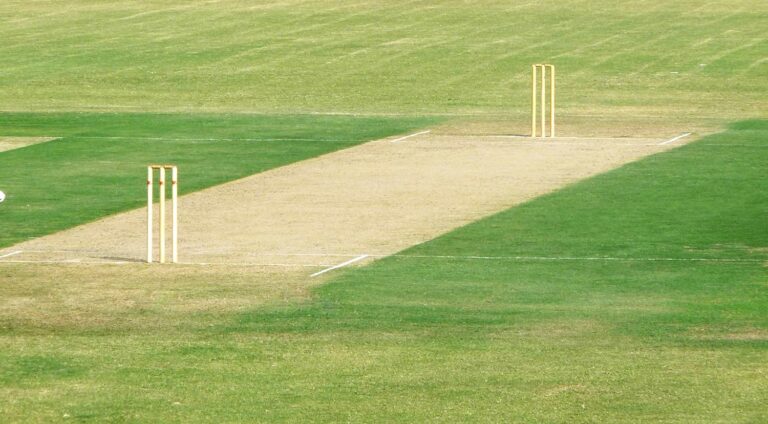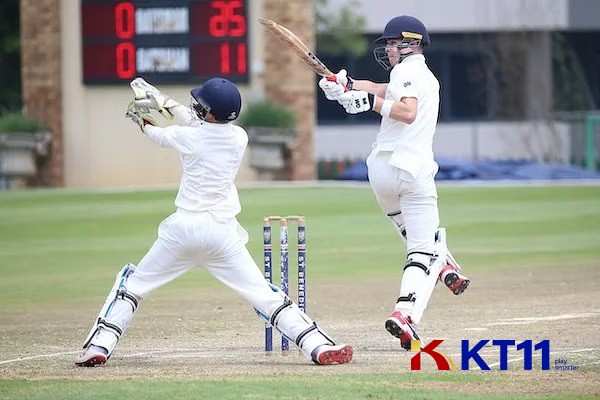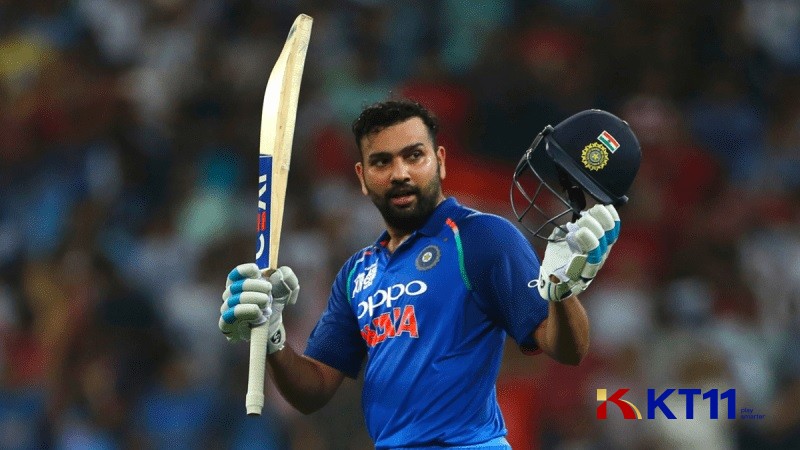Table of Contents

Cricket, also known as “बल्ला गेंद खेल” or “क्रिकेट” in Hindi, is a team sport where two teams of eleven players each compete against each other. Its modern form originated in England and is prevalent in countries of the Commonwealth, such as the UK, Australia, New Zealand, India, South Asia, Southern Africa, and the West Indies. Cricket seasons primarily fall during spring and summer, complementing football, which is played during autumn and winter.
Cricket matches vary in duration. A single match in international cricket contests can last for over six hours per day and extend up to five days, with numerous breaks for lunch and tea. The abundance of cricket terminology often perplexes those unfamiliar with the sport. However, for fans, this sport and the intense competition between top cricketing nations provide thrilling entertainment. Occasionally, cricket matches even lead to diplomatic tensions, such as the notorious Bodyline series between England and Australia.
Here is the cricket introduction brought to you by KT11.
The basic rules
Cricket is divided into two teams, the attacking side and the defending side, each consisting of 11 players. There are specialized roles within each team: the “batsman” who excels at batting, the “bowler” who excels at bowling, and the “all-rounder” who is proficient in both batting and bowling. Additionally, the defending side includes a player in a specialized catching position called the “wicket-keeper”.
On the batting side, there are two batsmen on the field. One is called the “striker,” who faces the bowler and hits the ball thrown by the bowler. The striker’s partner stands in the batting area as the “non-striker”. The wicket-keeper stands or crouches behind the wickets at the batting end. Besides the bowler and wicket-keeper, the captain of the defending side distributes the remaining nine players, known as fielders, across the field to cover as much area as possible.
The objective of the game is for both teams to continuously score runs through bowling and batting to win the match.
Pitch

The cricket field is oval-shaped, with boundary ropes forming the perimeter around the field.

In the center of the field lies a strip of clay and short grass known as the “pitch.” At either end of the pitch stand three vertical wooden posts called “stumps.” Two horizontal wooden pieces, known as “bails,” sit atop grooves in the tops of the stumps, connecting the three stumps together. The combination of three stumps and two bails forms a “wicket.” One end of the pitch is designated as the “batting crease,” where the batsman stands, while the other end is the “bowling crease,” where the bowler delivers the ball.
The rectangular field is marked with boundary lines known as “creases.” These creases are typically used to determine if a batsman is out or to judge the legality of a delivery by the bowler.
The match process
The match begins with the captains tossing a coin to decide which team will bat first and which will field.
Each match is divided into several “overs.” Generally, each over consists of six consecutive deliveries bowled by the same bowler. A bowler cannot bowl two consecutive overs. After completing an over, the bowler returns to a fielding position, and another bowler takes over. At the end of each over, the batting and bowling ends switch.
Test matches usually have at least six hours of actual play per day and last for three to five days. Single-innings matches typically last for six hours or more and conclude within a single day.
An innings ends under the following circumstances:
– Ten of the eleven batsmen are “dismissed” (out).
– The target score is reached.
– The predetermined number of overs is completed (typically 50 overs in limited-overs matches).
– The batting team captain “declares” their innings “closed” (not applicable in matches with a set number of overs).
A batsman can continue batting until they are “dismissed.” There are ten ways a batsman can be dismissed. If a batsman is dismissed, another batsman from the batting team replaces them until all ten batsmen are out, ending the innings.
How a batsman can be dismissed
Here are the translations of the first six dismissal methods:
Caught : As the name suggests, the batsman hits the ball, and it’s caught by a fielder before it touches the ground.
Bowled : The bowler delivers the ball, and it hits the stumps directly behind the batsman.
Leg before wicket, lbw : If the ball, if not obstructed, would hit the stumps but instead hits the batsman’s body (usually the leg), the batsman is judged out for leg before wicket.
Run out : During the course of play, if the batsman or their bat is not behind the crease and the wickets are fairly and legitimately broken by the fielding side, the batsman is considered run out.
Stumped : The wicketkeeper catches the ball and breaks the wickets while the batsman is out of their crease and hasn’t returned.
Hit wicket : The batsman hits the stumps with their bat or body, and is considered out for hitting the wickets.
How to score
There are three ways to score:
The first is when the batter hits the ball and runs to the other end of the field while their non-batting teammate runs to the original end, earning one point.
The second is when the batter hits the ball, it lands within the boundary lines, then rolls or bounces out of bounds, earning four points. This type of scoring is also called a “Four”.
The third is when the batter hits the ball directly out of bounds without it landing, earning six points. This type of scoring is also called a “Six”.
Tournament and tournament format
Match-up game
Test cricket is the most traditional form of cricket competition, typically lasting four to five days with unlimited overs. Only matches between nations that meet the criteria for Test status are recognized as Test matches. There are only 10 nations eligible to participate in Test cricket, including England, Australia, South Africa, the West Indies, New Zealand, India, Pakistan, Sri Lanka, Zimbabwe, and Bangladesh.
First-class cricket is a form of Test cricket but is usually not restricted to international matches. First-class matches are limited to countries that have Test status, including their national or regional teams. Kenya is an important non-Test-playing nation, and matches between Kenya and other top teams are considered first-class, but domestic matches in Kenya are not. Typically, a match is considered first-class when both teams are recognized as first-class by the International Cricket Council (ICC). The major first-class competitions in various countries include:
- County Championship (England)
- Sheffield Shield (Australia)
- Currie Cup Series (South Africa)
- Regional Four Day Competition (West Indies)
- Plunket Shield (New Zealand)
- Ranji Trophy (India)
- Quaid-e-Azam Trophy (Pakistan)
- Premier Trophy (Sri Lanka)
- Logan Cup (Zimbabwe)
- National Cricket League (Bangladesh)
The County Championship
The County Championship is a top-tier competition that operates on a points system, with outcomes classified as Win, Tie, Draw, or Loss. Teams earn 16 points for a Win, 8 points for a Tie, 5 points for a Draw, and no points for a Loss, but additional points may be awarded.
Additional points are awarded for batting and bowling performances as follows:
Batting:
– 200-249 runs: 1 point
– 250-299 runs: 2 points
– 300-349 runs: 3 points
– 350-399 runs: 4 points
– 400+ runs: 5 points
Bowling:
– 3-5 wickets taken: 1 point
– 6-8 wickets taken: 2 points
– 9-10 wickets taken: 3 points
Additionally, points may be deducted for the following:
– Fielding an unregistered player: Deduction of all points earned in that match.
– Poor pitches: Deduction of 25 points.
– Slow over rates: Deduction of 1 point per over.
– Ball-tampering: Deduction of 8 points.
– Breach of salary cap: Deduction of 2.5 points.
– Discipline: Deduction of 16 points.
– Financial issues: Deduction of 48 points.
The team with the highest total points is crowned champion of this top-tier competition.
One-day matches
One-day matches, also known as limited overs cricket or instant cricket, originated from traditional English cricket to increase match attendance. One-day matches emerged in the 1960s, offering shorter match durations and more intense gameplay compared to Test cricket.
“One-day Internationals” is the term commonly used for international one-day cricket matches. In one-day matches, each team has only one designated batting innings, typically consisting of 50 overs in international matches.
The rules for one-day matches at the domestic level are usually referred to as List A cricket. However, due to cricket’s emphasis on international competition, domestic matches have less formalized adherence to one-day rules, resulting in fewer major competitions held regularly.
Following the implementation of one-day cricket rules, the cricket world introduced Twenty20 (T20) cricket rules in the early 21st century. With each innings limited to 20 overs, T20 matches are exceptionally short, attracting a larger fan base and garnering significant attention. Since 2007, the International Cricket Council (ICC) has organized the ICC World Twenty20, second in scale only to the Cricket World Cup among international one-day cricket tournaments, often referred to as a mini World Cup.
This trend has also influenced domestic cricket, where previously domestic competitions were primarily regional. Initially, domestic T20 cricket matches were played by existing regional teams outside of regular competitions, with less fixed formats.

However, in 2008, following the enormous success of the Indian Premier League (IPL), which broke away from traditional domestic leagues in India, other countries have followed suit in recent years by establishing their own independent T20 cricket leagues, such as:
– Big Bash League (BBL) in Australia
– Bangladesh Premier League (BPL)
– Lanka Premier League (LPL) in Sri Lanka
– Caribbean Premier League (CPL)
– Pakistan Super League (PSL)
In the case of the IPL, there are currently eight teams. Each team competes in a double round-robin league format during the season, with the top four teams advancing to the playoffs. The teams ranked first and second face off initially, with the winner advancing directly to the final match and the loser getting another chance in a playoff match against the winner of a match between the third and fourth-ranked teams. The victorious team from this playoff match also advances to the final, competing for the IPL championship.
Additionally, under the leadership of India, the T20 Champions League was established in 2009, facilitating exchanges between T20 champion teams from various countries.
Bet types
To Win the Match
Predict which team will win the match.
To Win the Toss
In cricket matches, the toss is conducted by the captains on the day of the match to decide which team will bat or bowl first. This option predicts which team will win the toss.
Top Team Batsman
This option predicts who will be the top batsman for each team, defined as the batsman who scores the most runs. If there are two or more batsmen with the same number of runs, the dead heat rule applies, meaning the potential winnings are equal to the bet amount divided by the number of tied players multiplied by the fractional odds.
1st Over Total Runs
Predict whether the total runs scored in the first over will be over or under the total set by the bookmaker.
Total Runs in Match
Predict whether the total runs scored by both teams in the match will be over or under the total set by the bookmaker.
Top Team Bowler
This option predicts who will be the top bowler for each team, defined as the bowler who takes the most wickets. If multiple players take the same number of wickets, the one who concedes fewer runs is considered. If still tied, the dead heat rule applies.
Bowler Total Match Wickets
Predict whether a specific bowler will take more or fewer wickets than the total set by the bookmaker.
Total Match Sixes
Predict whether the total number of sixes hit by both teams will be over or under the total set by the bookmaker.
Team Total Match Sixes
Predict whether each team’s total number of sixes will be over or under the total set by the bookmaker.
Batsman Match Runs
Predict whether a specific player will score more or fewer runs in the match than the total set by the bookmaker.
Total Match Fours
Predict whether the total number of fours hit by both teams will be over or under the total set by the bookmaker.
Team Total Match Fours
Predict whether each team’s total number of fours will be over or under the total set by the bookmaker.
Most Match Sixes
Predict which team will hit the most sixes.
Most Match Fours
Predict which team will hit the most fours.
Summary
Here is the cricket introduction brought to you by KT11. If you would like to reference more related content or promotional activities, please follow the subsequent articles.







